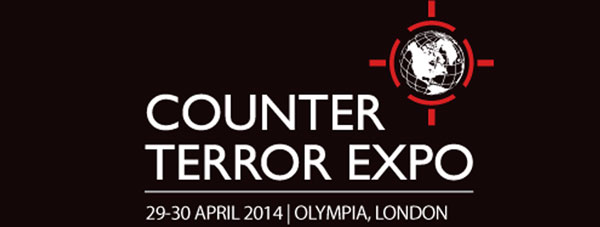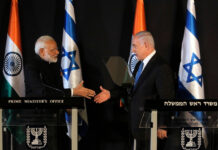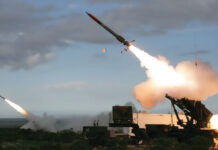The figures could not be clearer. Any objective analysis of the information obtained from open sources by the defence intelligence supplier IHS Janes shows that across the world the incidents of what they refer to as ‘damaging attacks’ has markedly increased in the last year. The average number of such attacks occurring over the six months to September 2013 is nearly sixty per-cent higher that the figure in the run up to the London Olympic Games. By any measure this is an astonishing increase. It is one that shows little sign of abating.
While aficionados of the debate on what constitutes terrorism might wish to suggest that these figures do not provide a detailed analysis of what can be defined as terrorism a look at the detailed reporting provided by IHS Janes shows that these ‘damaging attacks’ are to all intents and purposes acts of terrorism. Their motivation and targets all fit the definition developed by the United Nations which, despite some academic resistance, is largely accepted as the basis for trying to track trends in the international security landscape.
At current projections, if the rate of attacks continues to increase as they have done recently, the world will soon experience a month in which 2,000 incidents are recorded in the IHS Janes Terrorism Intelligence Centre (JTIC). The rapidly deteriorating security situation in Iraq and Egypt alongside rising threats in the Sahel and Maghreb regions of North Africa and continuing insecurity in Pakistan and Nigeria makes the likelihood of this figure being reached early in 2014 quite high. This will create quite a backdrop against which delegates and equipment suppliers will meet at Olympia for the annual Counter Terrorism Expo in April 2014.
Those attending CTX 2014 will have the opportunity to discuss these trends and to explore what they mean for potential terrorism in Western Europe and the United States. This analysis shows this will be a timely event. As events in Boston, Woolwich and Nairobi have shown terrorism remains unconfined to specific countries in the Middle East and North Africa.
Al Qaeda Far From Undefeated
Despite some political posturing around the start of the year in Washington the simple fact of the matter is that Al Qaeda is far from defeated. Whilst strikes by unmanned aircraft have had a disruptive impact on the operations of the movement in some of the areas with the most active franchises its acolytes and adherents are still able to stage manage major events that are reminiscent of what happened in Mumbai and London. Given these trends the question on the lips of many that will attend CTX 2014 is how can future strikes be prevented? If recent developments are anything to go by the Americans are beginning to show a greater flexibility as the geographic range of Al Qaeda is extending from Pakistan across the Middle East to the Atlantic shoreline of West Africa.
Disruption and prevention of such attacks of course requires increased intelligence. In some areas where international terrorism is beginning to establish a new footprint, such as along the North African coastline and into the Sahel, it will take time to develop reliable sources of human intelligence to target key leaders involved in the planning of attacks. Strikes by unmanned aircraft, often referred to as drones, do require a range of intelligence sources to ensure that the possibility of collateral damage is minimised. Reliable human intelligence is always at a premium.
Of late the Americans appear to have signalled a slight shift in their approach to prosecuting what are referred to as high value targets. The capture of a leading member of Al Qaeda in broad daylight in Tripoli sparked a furious reaction from the Libyan Government and appeared to be the trigger for the Prime Minister to be kidnapped.
The failed raid in Somalia at the same time also targeted a leading figure in Al Shabab. Days later, the capture of a leading member of the Pakistani Taliban using a similar Special Forces mounted raid provides a pointer as to how the Americans are having to shift their tactics away from unmanned air strikes to contain the escalating threats that are now emerging. Where intelligence is thin on the ground Special Forces raids can pick up additional and potentially valuable intelligence at the location where the high value target has been located.
The Disposition Matrix
This apparent shift in tactics also shows the way in which the so-called ‘Disposition Matrix’ (a targeting matrix by any other name) that the Americans are now using to create the framework for operations to disrupt the leadership of Al Qaeda is being applied. Recent statements emerging from the White House have offered some increased transparency as to how individuals that are thought to occupy senior positions in the international operations of Al Qaeda are being pursued.
Each situation is clearly being seen on a case-by-case basis. Getting an operator on the ground in the Nevada Desert to pull the trigger and unleash a Hellfire Missile against a moving truck is not the only option the Americans now seem to favour in the global effort to attack the increasing trends in international terrorism.
For many Americans the one lesson that can never be forgotten is that before September 11 the terrorists gained a sanctuary in Afghanistan from which they were able to project evil onto the international in what will be an event long marked in history. The prevention of any repeat of that event requires some form of upstream engagement in areas where terrorists seek to exploit ungoverned spaces.
Sadly at the moment they have simply too many hiding places. With the terrible costs of the military involvement in Iraq and Afghanistan likely to be counted for many years to come alternative methods must be found to contain international terrorism. CTX 2014 provides the ideal international forum in which those involved in prevention, protection and responses when terrorists do succeed to come together and debate these fast moving issues.










